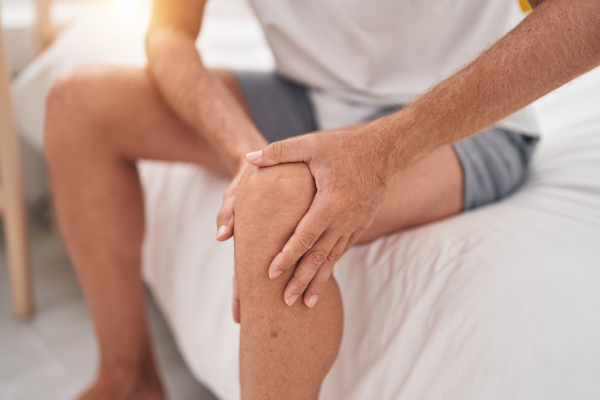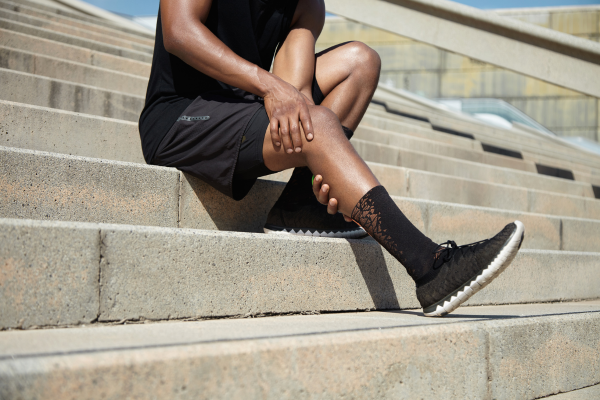When it comes to alleviating pain, improving mobility, or simply relaxing, people often find themselves choosing between a soothing massage or seeking treatment from a professional physiotherapist or osteopath. Both options offer relief, but it’s important to understand the key differences between massage therapy vs physical therapy, as well as the roles of professionals like osteopaths.
In this article, we’ll explore the distinction between these two types of treatment, helping you make an informed decision about which option is best suited to your needs.
Understanding massage therapy
Massage therapy is widely known and often associated with relaxation, stress relief, and muscle tension reduction. A massage therapist works on the soft tissues of the body, primarily the muscles, tendons, ligaments, and connective tissues. By using techniques such as kneading, rubbing, and pressing, they aim to improve blood circulation, relieve tension, and promote overall well-being.
The benefits of massage therapy include:
- Stress relief and mental relaxation
- Easing muscle soreness and fatigue
- Improving circulation
- Reducing anxiety and enhancing sleep quality
However, while a massage can make you feel good, it’s important to note that it’s main focus is on relaxation and temporary relief of symptoms. If you have chronic pain, stiffness, or musculoskeletal conditions, it’s worth considering whether a massage is really what you need, or if professional intervention like physiotherapy or osteopathy is needed.
What is Physiotherapy?
Physiotherapy, also known as physical therapy, is a medical profession that focuses on the diagnosis, treatment, and prevention of musculoskeletal disorders. A physiotherapist uses evidence-based approaches to treat physical injuries, chronic pain, and mobility issues. Treatments can include:
- Manual therapy (including massage techniques)
- Exercise therapy to strengthen muscles and improve movement
- Education on posture and injury prevention
- Electrotherapy, such as ultrasound and TENS machines
Unlike massage, which is largely about relaxation and well-being, physiotherapy targets the root cause of physical problems. A physiotherapist will create a tailored treatment plan based on your specific condition, ensuring long-term recovery and improved functionality.
Do physiotherapists do massages?
A common question people ask is: do physiotherapists do massage? The answer is yes, but not in the same way as a massage therapist. While some physiotherapists may incorporate massage techniques into their treatment plans, these are typically part of a broader strategy to address underlying problems, such as joint dysfunction, muscle imbalances, or postural issues.
Physiotherapists use manual therapy, which can involve soft tissue techniques similar to massage, but it is combined with clinical assessments and functional exercises aimed at restoring movement and eliminating pain for the long term.
What is Osteopathy?
Osteopathy is another form of manual therapy, and osteopaths focus on diagnosing, treating, and preventing a wide range of health problems through the manipulation of muscles, joints, and bones. Like physiotherapy, osteopathy is evidence-based, and osteopaths often treat people suffering from back pain, neck pain, sports injuries, or postural issues.
What sets osteopathy apart is its approach to treating the body. Osteopaths believe that the structure of the body influences the way it functions, so they take into account the interconnection between bones, muscles, nerves, and connective tissues. Treatment may include:
- Joint mobilisation and manipulation
- Stretching techniques
- Soft tissue massage
- Prescribed exercises for home
Osteopathy not only relieves pain, but also improves overall function and mobility, promoting the body’s own healing mechanisms. It is particularly effective for treating chronic conditions, such as long-term back pain or repetitive strain injuries.
Physiotherapy and massages: How are they different?
While both physiotherapy and massage therapy involve hands-on treatment, they serve different purposes:
Approach and focus
Massage therapy mainly focuses on relaxation and the temporary relief of muscle tension. It’s about making you feel good by improving circulation and easing sore muscles. Physiotherapy, however, takes a clinical approach to diagnosing and treating the underlying causes of pain and dysfunction. A physiotherapist’s goal is to restore mobility, strength, and function, often through a combination of manual therapy, exercise, and education.
Training and qualifications
Massage therapists typically undergo certification programmes, but these are shorter and less medically intensive than physiotherapy or osteopathy degrees, which require years of education and are trained to work within the healthcare system, often alongside doctors. In the UK, physiotherapists must be registered with the Health and Care Professions Council (HCPC), ensuring they meet strict professional standards.
Treatment goals
Massage Therapy aims to improve relaxation, relieve stress, and temporarily alleviate muscle tightness. Whereas Physiotherapy aims to treat the source of pain or dysfunction, often leading to long-term improvement and the prevention of further issues.
Scope of practice
Massage Therapy will target the soft tissues of the body – muscles, tendons, and ligaments.
But Physiotherapy and Osteopathy have a much broader scope, addressing musculoskeletal and neurological issues that can affect movement, pain levels, and quality of life.
Figuring out ‘Do I need a massage or Physiotherapy?’
Choosing between a massage and physiotherapy will depend on your needs and goals. If your primary goal is to relax, reduce stress, or alleviate temporary muscle soreness after a workout, a massage may be the right choice. It’s also ideal for improving circulation and promoting a sense of well-being.
But if you are dealing with a specific injury, chronic pain, or mobility issues, you’ll likely benefit from seeing a physiotherapist or osteopath. These professionals can offer long-term solutions to help you recover and avoid future problems. And if your pain stems from poor posture, repetitive strain, or long-term conditions like arthritis or sciatica, osteopathy may offer a more comprehensive, holistic approach to improving your overall body function.
Why see a professional at Carl Todd Clinics?
At Carl Todd Clinics, our team of experienced physiotherapists and osteopaths understand that every patient is unique. Whether you’re recovering from injury, managing chronic pain, or aiming to improve your overall mobility and health, our team can offer a comprehensive treatment plan tailored to your specific needs. By addressing the root cause of your issues, rather than just alleviating symptoms, we can help you achieve real, long-term results.
Choose real good over feel good
While massage therapy can certainly make you feel good, it’s important to recognise its limitations, especially if you’re dealing with ongoing pain or injuries. Physiotherapists and osteopaths go beyond temporary relief, offering evidence-based treatments that target the underlying issues affecting your body. By choosing the right treatment, you can not only relieve pain, but also aid long-term recovery and prevent future problems.
If you’re unsure which option is right for you, consider booking a consultation at Carl Todd Clinics, where we can assess your condition and provide a personalised plan for your recovery and well-being.





